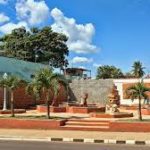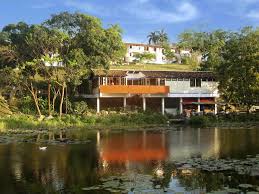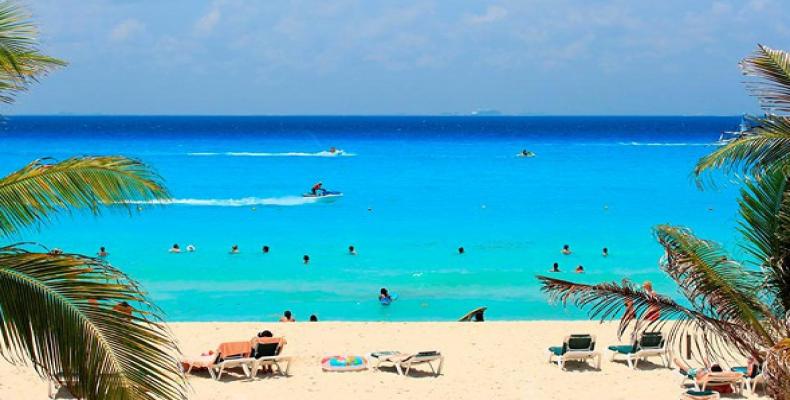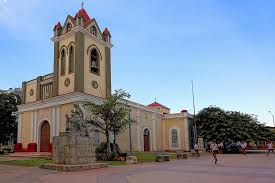

 ARTEMISA CITY, CUBA, KNOWN AS GARDEN OF CUBA. PHOTOS.
ARTEMISA CITY, CUBA, KNOWN AS GARDEN OF CUBA. PHOTOS.
Artemisa (Spanish pronunciation: [aɾteˈmisa]) is a municipality and city in Cuba, formerly part of La Habana Province. According to a law approved by the Cuban National Assembly in August 2010, Artemisa became the capital city of the newly formed Artemisa Province, which comprises eight municipalities of the former La Habana Province and three from Pinar del Río.
HISTORY.
The origin of the name of Artemisa is uncertain. It has been argued to have originated from the Greek goddess Artemis (Diana, in the Roman version) or that it refers to the name of Ragweed in Spanish, Artemisia (Ambrosia artemisifolia), abundant at the time.
Artemisa was an important source of fighters supporting Fidel Castro’s Revolution during the attack on “Cuartel Moncada” in Santiago de Cuba (1953) and Sierra Maestra Guerrilla (1956–1959). The Martyrs Mausoleum (Mausoleo de los Mártires) in Artemisa is a National Monument of Cuba.
Artemisa belonged to Pinar del Río Province until 1970.
GEOGRAPHY.
The municipality is divided into the barrios of Las Cañas, Lavandero (El Pilar), Cayajabos, Lincoln (Andorra), Pijirigua, Puerta de la Güira, Las Mangas, Neptuno and El Corojal.
DEMOGRAPHICS.
In 2004, the municipality of Artemisa had a population of 81,209. With a total area of 690 km2 (270 sq mi), it has a population density of 117.7/km2 (305/sq mi).
ECONOMY.
Artemisa is widely known among Artemiseños by the name Jardín de Cuba (Garden of Cuba). Its ferric red soil is also an outstanding feature and provides great fertility to the area, which produces banana, tobacco, sugar cane, and minor fruits. Due to the color of the soil, Artemisa is known as Villa Roja (Red Village).
MAIN SIGHTS.
– Church of Artemisa
– The Cafetal Angerona (named after Angerona, the goddess of silence and fertility, and protector of Rome), which is currently in ruins. Its remains evoke a period of great abundance, business development, love affairs, and slavery. The cafetal belonged to the German entrepreneur Cornelio Souchay who fell in love with the black Haitian, Úrsula Lambert. The couple lived their romance in secret due to the taboos of the period.
– The Hotel Campoamor, built by Asturiano Fernando González-Campoamor, has played an important role since it was finished in 1911. Many important figures visited the place, including Rita Longa, Ernest Hemingway, Juan Marinello, Gabriela Mistral, and Ignacio Villa “Bola de Nieve.”
– Centrales azucareros (Sugar mills) Pilar and Lavandero are landmarks of the city, as well as the mansion of sugar magnate, Julio Lobo.
– The Artemisa Municipal Museum.
Artemisa’s patron saint is Saint Mark the Evangelist. The church of Artemisa is located in The Park (el Parque). The building was renovated due to efforts made by Father Antonio Rodriguez Dias, the hard work and cooperation of many Artemiseños, and generous monetary donations from German brethren.
PERSONALITIES.
Important personalities in the history of Cuba were born or lived in Artemisa. Among them, Magdalena Peñaredonda, a poet and journalist, appointed as captain of rebel forces during the war of independence, Father Guillermo González Arocha, born in Regla, but whose significant contribution to the independence of Cuba was carried out while a priest in Artemisa, is considered an adopted son of the city. This priest also founded a school and had the cemetery of the city built.
 CIUDAD DE ARTEMISA, CUBA, CONOCIDA COMO JARDÍN DE CUBA. FOTOS.
CIUDAD DE ARTEMISA, CUBA, CONOCIDA COMO JARDÍN DE CUBA. FOTOS.
Artemisa es un municipio y ciudad de Cuba, anteriormente parte de la provincia de La Habana. De acuerdo con una ley aprobada por la Asamblea Nacional de Cuba en agosto de 2010, Artemisa se convirtió en la capital de la recién formada Provincia de Artemisa, que comprende ocho municipios de la antigua provincia de La Habana y tres de Pinar del Río.
HISTORIA.
El origen del nombre de Artemisa es incierto. Se ha argumentado que tiene su origen en la diosa griega Artemisa (Diana, en la versión romana) o que se refiere al nombre de ambrosía en español, Artemisia (Ambrosia artemisifolia), abundante en ese momento.
Artemisa fue una fuente importante de combatientes que apoyaron la Revolución de Fidel Castro durante el ataque al “Cuartel Moncada” en Santiago de Cuba (1953) y la Guerrilla Sierra Maestra (1956-1959). El Mausoleo de los Mártires (Mausoleo de los Mártires) en Artemisa es Monumento Nacional de Cuba.
Artemisa perteneció a la provincia de Pinar del Río hasta 1970.
GEOGRAFÍA.
El municipio se divide en los barrios de Las Cañas, Lavandero (El Pilar), Cayajabos, Lincoln (Andorra), Pijirigua, Puerta de la Güira, Las Mangas, Neptuno y El Corojal.
DEMOGRAFÍA.
En 2004, el municipio de Artemisa tenía una población de 81.209. Con una superficie total de 690 km2 (270 millas cuadradas), tiene una densidad de población de 117,7 / km2 (305 millas cuadradas).
ECONOMÍA.
Artemisa es ampliamente conocida entre los artemiseños por el nombre de Jardín de Cuba (Jardín de Cuba). Destaca también su suelo rojo férrico que aporta gran fertilidad a la zona, productora de plátano, tabaco, caña de azúcar y frutos menores. Por el color del suelo, Artemisa se conoce como Villa Roja (Pueblo Rojo).
PRINCIPALES VISTAS.
– Iglesia de Artemisa
– El Cafetal Angerona (llamado así por Angerona, la diosa del silencio y la fertilidad, y protectora de Roma), actualmente en ruinas. Sus restos evocan un período de gran abundancia, desarrollo empresarial, amoríos y esclavitud. El cafetal perteneció al empresario alemán Cornelio Souchay que se enamoró de la haitiana negra Úrsula Lambert. La pareja vivió su romance en secreto debido a los tabúes de la época.
– El Hotel Campoamor, construido por el asturiano Fernando González-Campoamor, ha jugado un papel importante desde su finalización en 1911. Numerosos personajes importantes visitaron el lugar, entre ellos Rita Longa, Ernest Hemingway, Juan Marinello, Gabriela Mistral e Ignacio Villa “Bola de Nieve “.
– Centrales azucareros Pilar y Lavandero son hitos de la ciudad, así como la mansión del magnate azucarero Julio Lobo.
– Museo Municipal de Artemisa.
El santo patrón de Artemisa es San Marcos Evangelista. La iglesia de Artemisa se encuentra en El Parque (el Parque). El edificio fue renovado gracias a los esfuerzos realizados por el Padre Antonio Rodríguez Dias, el arduo trabajo y la cooperación de muchos artemiseños y generosas donaciones monetarias de los hermanos alemanes.
ALUSIONES PERSONALES.
En Artemisa nacieron o vivieron importantes personalidades de la historia de Cuba. Entre ellos, Magdalena Peñaredonda, poeta y periodista, nombrada como capitán de las fuerzas rebeldes durante la guerra de la independencia, al padre Guillermo González Arocha, nacido en Regla, pero cuyo importante aporte a la independencia de Cuba se llevó a cabo siendo sacerdote en Artemisa, Es considerado hijo adoptivo de la ciudad. Este sacerdote también fundó una escuela y mandó construir el cementerio de la ciudad.
Agencies/ Wiki/ Various/ Internet Photos/ Arnoldo Varona/ www.TheCubanHistory.com
THE CUBAN HISTORY, HOLLYWOOD.











